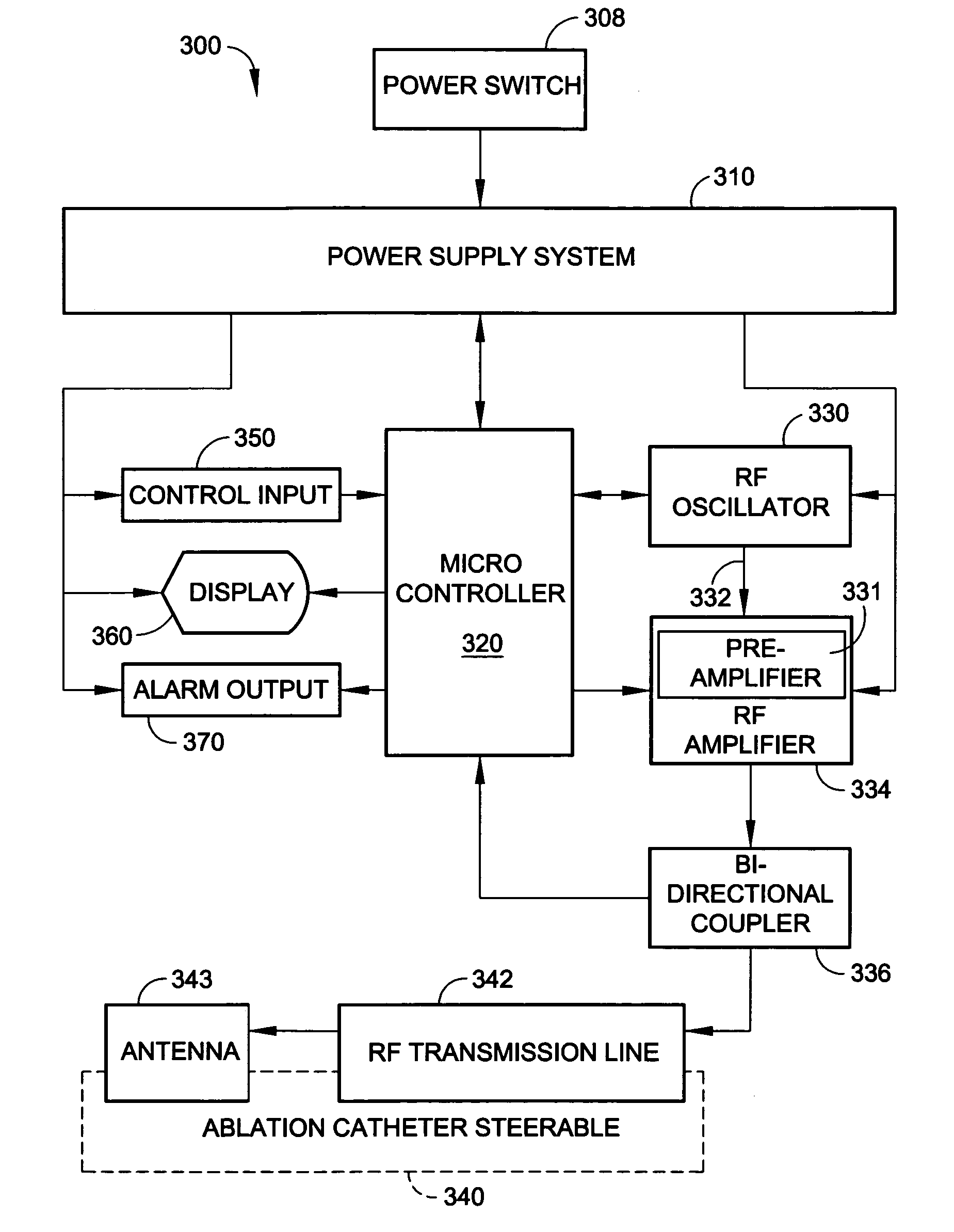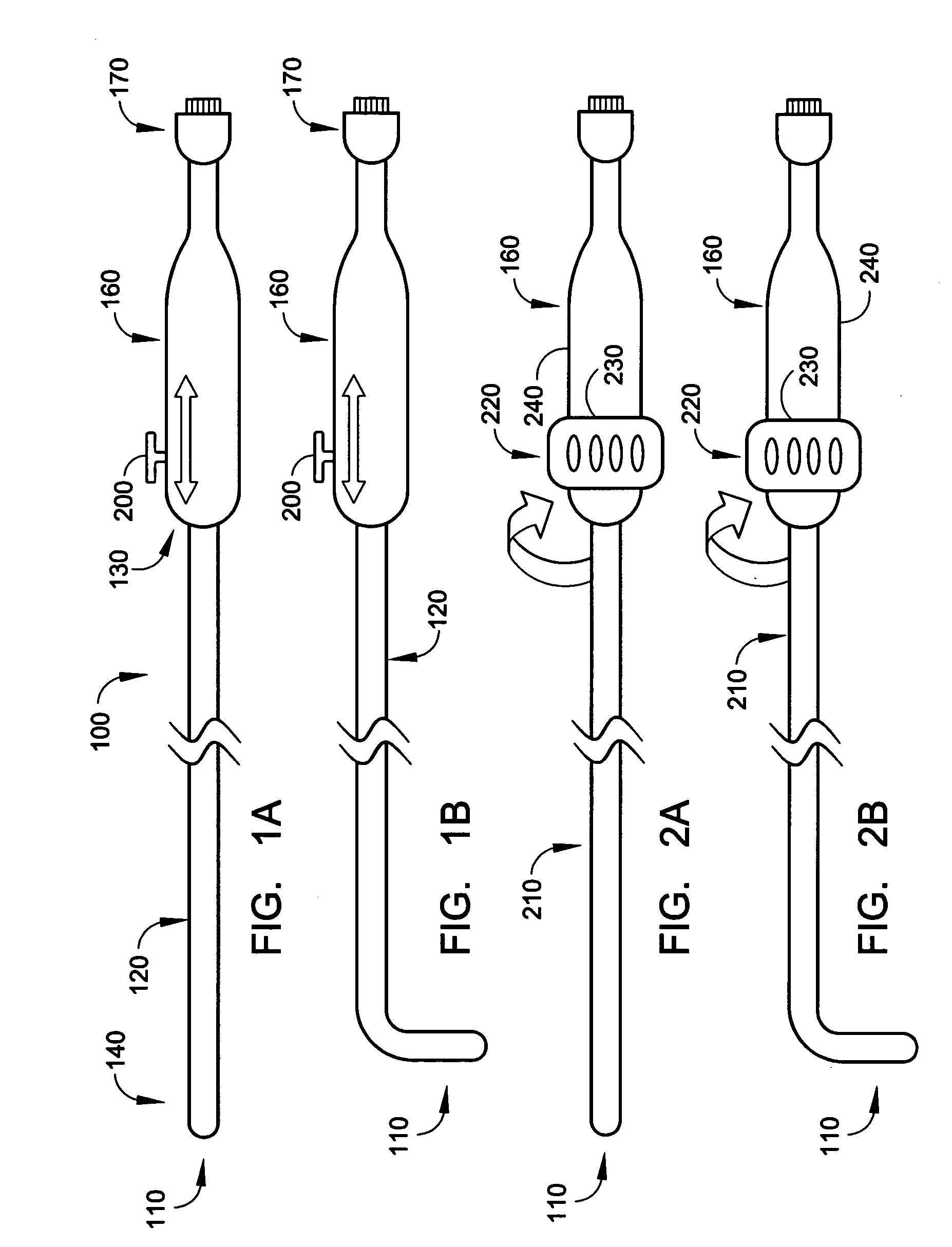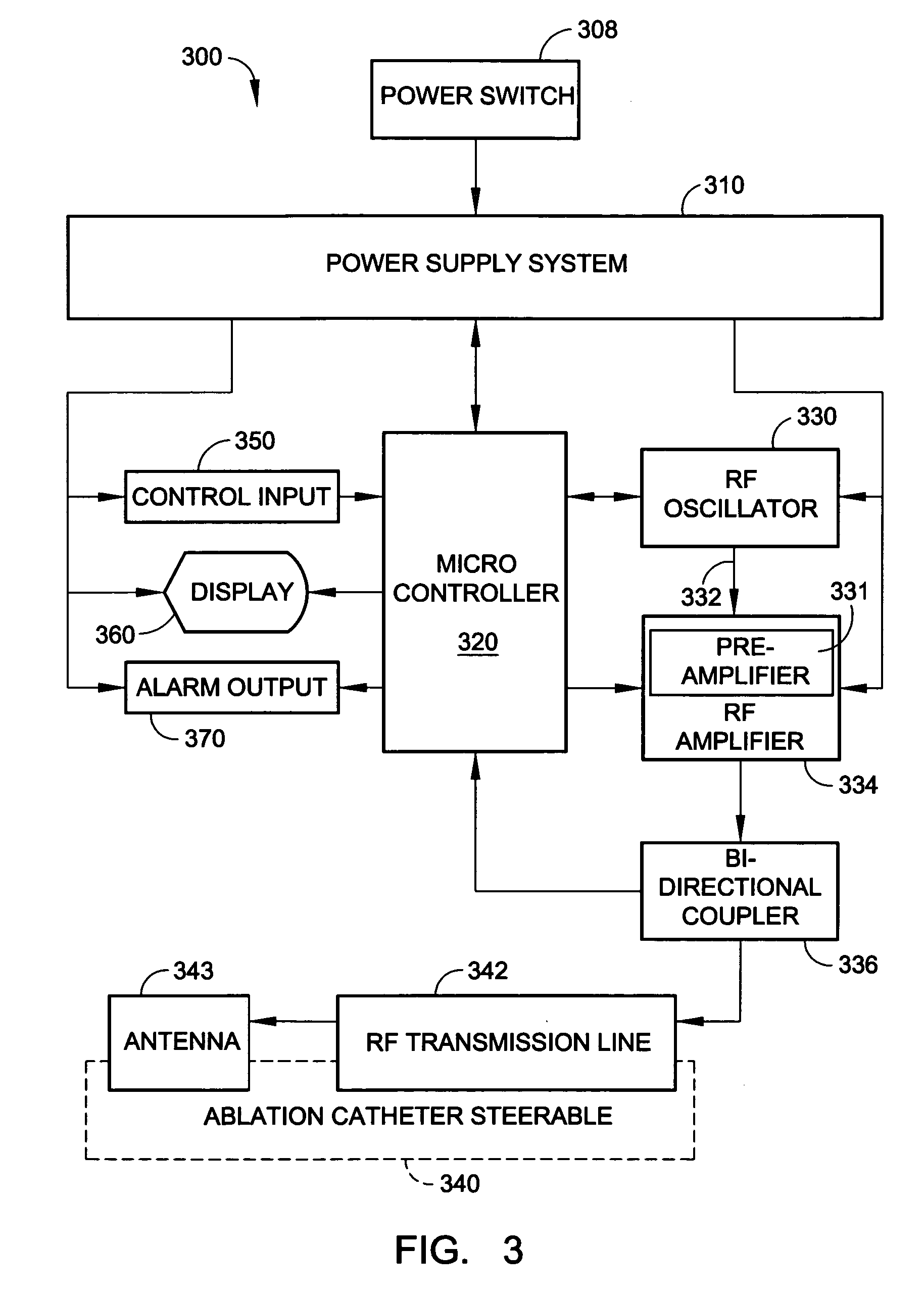Radio-frequency based catheter system and method for ablating biological tissues
a biological tissue technology, applied in the field of radio frequency based catheter systems for ablating biological tissues and occlusions, can solve the problems of a large health care burden, stroke and heart attack, and the inability to widely adopt maze procedures, so as to achieve efficient tissue ablation and minimize the effect of reflected power ratio
- Summary
- Abstract
- Description
- Claims
- Application Information
AI Technical Summary
Benefits of technology
Problems solved by technology
Method used
Image
Examples
Embodiment Construction
[0026]The present invention involves a radio-frequency based catheter system for the ablation of biological tissues, as shown in FIG. 1. In particular the present invention is adaptable to ablate tissues located in the internal vessels of living mammals by way of a radio-frequency (RF) antenna that is incorporated as part of a catheter. The catheter is insertable within the internal lumens or body vessels of such mammals and the RF antenna is placed in proximity of the tissues to be ablated where RF energy is applied to effect the tissue ablation.
[0027]The invention provides a means for generating a train of RF energy pulses, especially in the microwave frequency range, which are delivered via an electrical transmission line to the RF antenna. The frequency of the RF energy pulses can be selectively varied according to the electrical characteristics of the electrical transmission line and the load impedance associated with the tissue ablation.
[0028]The invention also incorporates a ...
PUM
 Login to View More
Login to View More Abstract
Description
Claims
Application Information
 Login to View More
Login to View More - R&D
- Intellectual Property
- Life Sciences
- Materials
- Tech Scout
- Unparalleled Data Quality
- Higher Quality Content
- 60% Fewer Hallucinations
Browse by: Latest US Patents, China's latest patents, Technical Efficacy Thesaurus, Application Domain, Technology Topic, Popular Technical Reports.
© 2025 PatSnap. All rights reserved.Legal|Privacy policy|Modern Slavery Act Transparency Statement|Sitemap|About US| Contact US: help@patsnap.com



